
23 minute read
CITIES ALIVE: RETHINKING GREEN INFRASTRUCTURE
International urban design fi rm Arup takes a multidisciplinary approach to shaping a better world, working across every aspect of today’s built environment. The fi rm’s Cities Alive publications are a reflection of the time, eff ort and resources invested into the study of cities and the issues they will need to respond to in the years to come. Below are excerpts taken from Cities Alive: Rethinking Green Infrastructure, which looks at how we can build nature into our urban systems at all scales through high-quality landscape design, via new development or retrofi tting through a green infrastructure design approach.
The report analyses existing research and trends in landscape design, drawing out key elements that can help deal with rapidly rising urban populations, mitigate climate change and produce integrated solutions.
It shows how the creation of a linked city ecosystem encompassing parks and open spaces; urban trees, streets, squares; woodland and waterways can help create healthier, safer and more prosperous cities. To realise this vision, green infrastructure has to now take a more influential role in the planning and design of cities and urban environments.
In the report’s foreword, Sue Illman, President of the Landscape Institute (UK) states: “… we need to rethink our world on a day-to-day basis if we are to deliver the towns and cities that will provide not only for our needs, but for our pleasure and delight — liveable places to live, work and play, where people can lead happy and healthy lives, despite the increased demands we will place upon them. “And in that future, the professions must fundamentally rethink green, not as an optional add-on, a desirable enhancement or a dutiful nod towards biodiversity, but as a fundamental part of the solution. We look to technology to solve our problems, but now we must equally understand the power that nature can contribute to urban technology and science.”
INTRODUCTION Cities need to be celebrated — through the centuries they have been vitally important in the development of mankind as centres of commerce, culture and learning. It is within the urban fabric where the greatest human advancements and changes in technology have occurred. It is vital that our cities continue to strive to be places of wonderment and centres of excellence against future challenges.
Only over the last 200 years has mass urbanisation really occurred, and as recently as 2007, for the fi rst time in human history, the majority of people lived in towns and cities. With this continuing shift to urban living, cities are facing far greater social, economic and environmental pressures. From New York to Shanghai, our drastically diff erent cities must all ultimately confront the same issues of climate change, scarcity of resources, environmental degradation, pollution and dangers to human health. A lack of response to these pressures, or business as usual, will have dire consequences. Can we rise to the challenge to make our cities life-enhancing communities of discovery, creativity and innovation that are safe and healthy for humans and ecology?
Urban spaces are inextricably linked to the environment of our planet and there is a compelling case for building new cities and retrofi tting or expanding existing ones in ways that work in harmony with nature, by linking ecological and human systems. The city can become an ecosystem that embeds nature and people as equal partners to help rebalance growing urbanisation. The objective is to achieve a city that works in equilibrium and balance with nature, rather than against it, to address the current excesses of urban living. Ultimately cities must answer to the problems of keeping their citizens, happy, healthy and fulfi lled in order to continue their important role in human development.
At present, most cities woefully fail to achieve any sort of balance between people and nature. As pressure has grown on expanding urban areas, urban green space has had to compete against high land prices and increasing densities of development and urban infrastructure, thus squeezing nature out of our cities. This has had a detrimental eff ect on urban environments with resulting social and health impacts.
There is a growing awareness among people and governments, backed up by global research, that increasingly recognises the social, environmental and economic benefi ts that nature can deliver in creating liveable cities. Governments are now recognising the value of the services provided by our ecosystems: European Union directives are imposing standards for air and water quality. This is reflected in a growing interest in and demand for more sustainable development in urban areas — for green infrastructure (GI), open space and green roofs that are more commonplace, and movements towards sustainable urban drainage systems, urban agriculture and low carbon residential developments. While this recognition is growing, development can tend to be piecemeal or fall short of the ideal due to the complexities of planning systems and economic constraints. Some cities and places have been successful in understanding the challenges and are tackling them, but there is clearly no routine or consistent application of
environmental policy. It is useful to understand why this is and investigate the lessons that can be taken from successful strategies and approaches. Game-changing projects like the London Olympic Park, La Promenade Plantee in Paris and the High Line in New York have all spectacularly overcome the obstacles above. These ex-industrial spaces have been refurbished and by weaving nature into their fabric positively demonstrate what a GI-led design can achieve in the public’s perception. They illustrate how obsolete areas of the city can be successfully retrofi tted for the future; these multifunctional spaces are both adaptable and sustainable, while also linking to a much wider network of natural ecosystems.
As we move to a highly urbanised future characterised by uncertainty and risk, there is a need to prepare cities to embrace new global drivers as well as off er potential solutions to the problems cities will face as a result. It is imperative that new urban development avoids the mistakes of the past by taking opportunities to create exciting and challenging architecture within resilient cities that will protect the most vulnerable against climate change and social inequalities.
DRIVERS OF CHANGE Most climatologists, social scientists and historians agree that human activity is currently the major force of change on planet Earth and that we will leave an ever-lasting geological record of these changes. By 2050, the human population will have reached 9 billion; of this, 75 percent are expected to be living in cities. Until then, climate change, resource scarcities, rising energy costs and a preoccupation with preventing and minimising the eff ects of the next natural or manmade disaster will undoubtedly shape our vision of the built environment. As major cities reach their boundary limits, extending transport networks and urban administrative sprawl will no longer provide an eff ective solution. Instead, demographic and lifestyle changes will serve as major catalysts in the shift toward increasing sustainability, resilience and adaptability in dense urban environments.
It is now generally recognised at all levels of government 2 that GI can provide a vital response to urban expansion. With urbanisation comes a host of diff erent issues that can aff ect the quality of urban space: an ageing population in the developed world, flux in the growth and collapse of business, worsening urban microclimates, a decrease in biodiversity, fragmented or ringfenced communities, increased risk and more expensive land. In the future, promoting and quantifying the environmental, social and economic benefi ts and role of a GI-led design approach as an integral part of the solution to urban environments in growing cities is likely to become ever more important.
1. SOCIAL BENEFITS: RETHINKING URBAN COMMUNITIES The urban environment is changing. Driven by the need to create more sustainable development, urban planners and city councils are rethinking the very structure and function of their cities. At the heart of this movement is a focus on creating more sustainable urban communities and healthier places. A way forward is to rethink the design process and redefi ne the functions and vital role that urban greening can play in achieving this goal. Since the creation of the fi rst people’s park (Birkenhead Park, 1844, designed by Sir Joseph Paxton), urban planners have been aware that trees, planting and open space enhance the quality of life for town and city dwellers. Today these associations are becoming more explicit. An increasingly strong evidence base demonstrates the positive eff ects that access to good-quality landscape has on our health and wellbeing — and the negative eff ects of its absence. We also know that areas of social and economic deprivation, which are often linked with poorer health and reduced life expectancy, can also be associated with limited access to good-quality green space. All those concerned with creating healthy places — public health professionals, planners and landscape architects — need to recognise urban greening as an asset that has enormous potential to improve our health and wellbeing. 6 Urban green space provides vital places for recreation and physical exercise. These places are made for relaxation, which acts to reduce stress and improve people’s physical and mental health.
People prefer living in green neighbourhoods, and house prices in these areas are relatively higher. Research now tells us that contact with nature helps people recover faster from illness, reducing the cost of healthcare. The city is a place where the public

“The role of green infrastructure in addressing the challenges of the 21st century cannot be underestimated. It is a natural, service-providing infrastructure that is often more cost eff ective, more resilient and more capable of meeting social, environmental and economic objectives than ‘grey’ infrastructure.” — Green Infrastructure: An Integrated Approach to Land Use, Landscape Institute Position Statement (2013)
realm, open space and parks provide vital places for social cohesion and community wellbeing.
People now migrate to urban areas for a whole host of reasons; for employment, but also for the vibrancy and culture of the city, experience and connection. With this comes the need for a new aesthetic function and identity in cities. In the future, the challenge for urban planning will not just be in squeezing the most out of the space, but in squeezing the most out of the experience of urban life.
In this regard, city designers must respond to these new criteria in their work. Community input is, and will continue to become more important in the planning process, and design needs to encourage healthy lifestyles, social interaction and new urban choices, while ensuring security. 1.1 Encouraging healthy and sustainable lifestyles 1.2 Supporting urban communities 1.3 Investing in liveable spaces For more on social drivers, view the full report.
2. ENVIRONMENTAL BENEFITS: SMART AND RESILIENT ENVIRONMENTS Climate change is one of the major drivers of change that can detrimentally aff ect the city. Sea levels and temperatures are already beginning to rise, and unadaptable or poorly designed urban environments will undoubtedly suff er the most from these changes. Considerate planning with multifunctional GI design can present opportunities for dramatically increasing resilience in urban environments. Better protection from climate change may also be supported through contributions from innovative technologies, longsighted forward-planning strategies and considered preparation for future adaptability.
In addition to this, planners, developers and designers have to consider what role they have in fostering sustainable urban environments — whether to adapt and change to new conditions or to introduce smart, resistant factors into new designs in order that they can endure climate change. 2.1 Enabling long-term climate resilience 2.2 Creating smart and connected landscapes 2.3 Fostering urban diversity For more on environmental drivers, view the full report.

3. ECONOMIC BENEFITS: URBAN RESOURCE STREAMS Whether in regeneration or advanced planning, building nature into the fabric of the cities can provide both aesthetic beauty while delivering real resources into urban environments. As space becomes a premium resource, the opportunity to maximise the productivity of multifunctional design and shared space is something that is likely to become more valuable in the future as the demand on resources and services increases. 3.1 Integrating urban food 3.2 Renewing urban spaces 3.3 Enabling energy and resource effi ciency For more on economic drivers, view the full report.
4. THE CASE FOR GREEN INFRASTRUCTURE As described in the executive summary GI (in the context of this report) is defi ned as the system of open spaces, natural areas, urban woodland and parks; green streets, squares and public realm; rivers and waterways; and smaller scale interventions such as green roofs, walls and facades — all of which lie within the physical networks of cities themselves and their immediate hinterlands, and perform essential ecosystem services. The importance of GI is supported by a growing body of research from around the world that is providing convincing proof of the widespread social, environmental and economic benefi ts it provides, along with the vital role as part of a multifunctional design approach in contributing to climate change resilience in our urban environments. Delivering the next generation of GI, however, requires a wider understanding of the GI approach and the signifi cant benefi ts it can deliver, to bring it into a more influential position in the planning and design process. GI also needs to be backed by stronger policy support, more collaboration, a willingness to invest and a longer term view taken of the return in terms of benefi ts to society. Urban landscape elements need also to be considered in the cost-benefi t analysis of development, given their longevity and designlife compared to contemporary development. Many trees will outlive new development and their owners.
A GI-led design approach has the potential to unlock complex interactions between, say, development, housing, flood management, food production and biodiversity. By adopting a multifunctional design approach, more dynamic, integrated and forward-thinking solutions can be realised that can also generate multiple secondary
“In the last decades, the global eff ort has continued to address the ideal healthy green city. However, many meaningful ideas remain only on paper — so many words, so little action. It is time for the mise en scene of thought to involve all the players; designers, engineers, politicians and citizens.” — Marta Pozo Gil, Wild City, Architectural Design #223

benefi ts. This integrated approach can unlock the design potential of our urban environments and create signifi cantly better streets, public realm and city open space for urban citizens. The landscape architecture profession with its proven track record of delivering GI at multiple scales, is ideally suited to lead this approach.
For more on green infrastructure, view the full report.
5. ACHIEVING CITIES ALIVE Once we begin to understand the trends shaping and influencing the future of cities, we can start to look at the implications and a way forward. How does a city need to adapt or change to deal with the coming decades? What do practitioners need to consider in new projects and developments?
The idea of bringing GI-led design into a more influential role in the design of cities is a signifi cant opportunity to influence the structure and design of the urban environment to respond to future needs. It can introduce a new ideology based around an ecosystems approach that can contribute to the health, resilience and prosperity of a city.
It is interesting to investigate why some cities are more successful in embracing sustainable design. Courageous environmental projects — like the Manazeres River Park in Madrid or Cheonggyecheon River in Seoul — deliver at a scale that realises substantial citywide environmental and social benefi ts. Other cities focus on providing multifunctional spaces, which can off er flood risk management along with recreation, amenity and habitat creation. Where urban space is under pressure, projects like the High Line in New York and Promenade Plantee in Paris eff ectively reuse old city infrastructure to create valuable new community space and redefi ne the possibilities. Some cities have begun to encourage integrated design of city infrastructure by encouraging collaboration among diff erent authorities, each with their own agendas. The question is, why do some cities embrace action, collaboration and sharing, while others don’t? In some cases success is down to enlightened individuals, city mayors or city offi cials. In others it is driven by large-scale events — the unifi cation of Germany encouraged Berlin to regulate the Biotope Area Factor to address climate change and loss of biodiversity; a series of heat waves encouraged the Greater London Council in the UK to adopt the All London Green Grid. 53 Though contexts may vary, approaches to implementing new GI and urban landscape should always use the resources, delivery mechanisms and policy context available today. In the UK for example, the value of GI has been pushed by the adoption of the National Planning Policy Framework (2012), which recognises the potential of GI in relation to climate change, as well as the need for local authorities to plan positively for networks of biodiversity. More recently, studies have also highlighted benefi ts for economic growth, by creating attractive environments for investment, as well as positive impacts on tourism, environmental cost savings, health improvements, employment generation, and food production. Moving forward, we should not expect that investment will be aimed at GI in its own right, but that it will have to compete with and should be integrated with other priorities.
Design of GI must always be appropriate to its context. Delivery mechanisms will diff er depending on the underlying goals: improving the quality of existing spaces or creating new assets which contribute to the wider network; largescale investment or smaller incremental projects; temporary, phased or permanent interventions. In all of these scenarios, multifunctionality and connectivity are crucial.
Delivery of GI has been somewhat piecemeal in the past. In the future, we should consider GI from the outset of any urban project or strategy. It should not be an independent driver for development, but a solution to a range of issues. Connecting multiple functions and securing benefi ts will meet a range of existing and future needs.
For more on achieving Cities Alive, view the full report.
6. STRATEGIES FOR DESIGNERS From the beginning of the design process, it’s important to bear in mind the multiplicity of end users. The design process must attempt to anticipate and if possible incorporate future functions of a space for years and decades to come. The changing demographics of the city, coupled with its changing needs, drive a demand to frame new landscape projects in a wider, multipurpose and multifunctional context.
The end-user is no longer a single modelable urban citizen. With the widening cultural
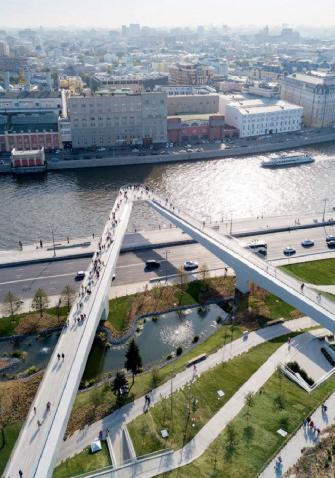
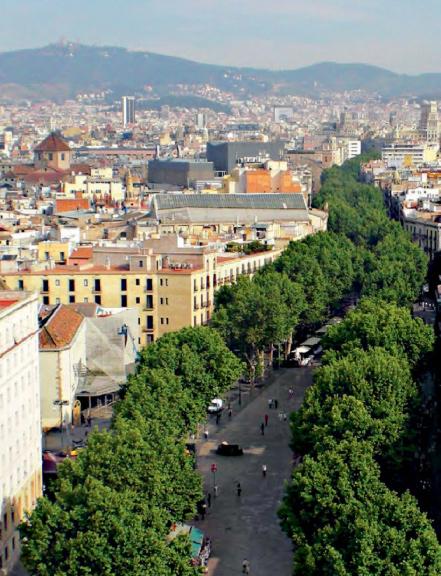
bounds of the city, its shifting demographics and accelerating technologies, the designer now must consider a whole host of possible end-users and their demands on the space. Not only this, but by considering nature itself as an end-user, the integration of biodiverse and climate-proof design becomes infi nitely easier. Competing demand on ever-tightening urban space can also be mitigated if multipurpose design is introduced from the beginning and use of the space is left open enough to allow adaptability.
The designer must also consider who has agency and control over the fi nished space. Large open spaces can provide an excellent opportunity for community-building around events and communityled initiatives. Removing the delineation between buildings and landscape will also help encourage a more fluid multipurposing of space. Buildings and green space should not be separate but share the same ecosystem, sense of adaptability, resilience and community, as they share the same space.
Not only the user and purpose of the space should be considered but also its function. A wall or roof need not simply be a supporting structure but can also become part of the GI of the city, using greening to absorb pollution, or space for produce or for encouraging wilding for biodiversity. Already, the direction in which building technology is heading will make multifunctioning spaces the cheaper and more desirable option for both new builds and rebranding projects. By working with designers from the beginning of the project, planners and developers can help to oversee and encourage embedded multifunctionality in the project. 6.1 Multipurpose and multifunction spaces 6.2 More than just a pretty place 6.3 How and for whom? 6.4 Future-proofi ng 6.5 New Techniques For more on strategies for designers, view the full report.
“The ideas being developed by Arup in Cities Alive seek to capture not only the beauty of nature but also the sustainability of balanced ecosystems. These are challenges for landscape designers creating new cities that meet our increased expectations for access to clean water, cheap and plentiful supply of food, and fast and eff ective transport systems, with the need to reduce the impact on natural resources. Cities Alive provides an important opportunity for ecosystem specialists to work closely with landscape professionals to optimise how we build for our future.” — Professor Monique SJ Simmonds OBE Director Kew Innovation Unit, Royal Botanic Gardens, Kew To view Cities Alive: Rethinking Green Infrastructure in full, visit the Arup website at arup.com
ABOUT ARUP Arup is an independent fi rm of designers, planners, engineers, architects, consultants and technical specialists, working across every aspect of today’s built environment to shape a better world. This report is a product of collaboration between the Landscape Architecture and Foresight + Research + Innovation teams at Arup and has involved a wide range of specialists within the fi rm. Arup’s Foresight + Research + Innovation team identifi es and monitors the trends and issues likely to have a signifi cant impact upon the built environment and society at large, researching and raising awareness about the major challenges aff ecting the built environment and their implications.
EXEMPLARY SHOWCASE ODS OUTDOOR DESI GN S OURCE
Editor Nicole Mulloy Editorial & Digital Coordinator Bethany Shea Art Director Kate Podger Publishing Manager & NSW Sales Marcus Hucker Sales/Account Managers Antonia Bewley (QLD) Pilar Danlag (VIC) John Oliver (VIC) Advertising Art Director Martha Rubazewicz Advertising Production Coordinator Brendan Alder Cover Image Omnitech Playgrounds Project Norris Bank Reserve (Victoria)

Chairman/CEO Prema Perera Publisher Janice Williams Chief Financial Officer Vicky Mahadeva Associate Publisher Emma Perera Finance & Administration Manager James Perera Circulation Business Development Manager Mark McTaggart Creative Director Kate Podger Marketing & Acquisitions Manager Chelsea Peters
Circulation enquiries to Sydney office 02 9805 0399 ODS is published by Universal Magazines, Unit 5, 6-8 Byfield Street, North Ryde 2113. Phone | (02) 9805 0399. Melbourne office, Suite 4 Level 1, 150 Albert Road, South Melbourne 3205. Phone | (03) 9694 6444. Printed in Singapore by Times Printers, timesprinters.com. This book is copyright. Apart from any fair dealing for the purpose of private study, research, criticism or review as permitted under the Copyright Act, no part may be reproduced by any process without written permission. Enquiries should be addressed to the publishers. The publishers believe all the information supplied in this book to be correct at the time of printing. They are not, however, in a position to make a guarantee to this effect and accept no liability in the event of any information proving inaccurate. Prices, addresses and phone numbers were, after investigation, and to the best of our knowledge and belief, up to date at the time of printing, but the shifting sands of time may change them in some cases. It is not possible for the publishers to ensure that advertisements which appear in this publication comply with the Competition and Consumer Act 2010 (Cth) and the Australian Consumer Law. The responsibility must therefore be on the person, company or advertising agency submitting the advertisements for publication. While every endeavour has been made to ensure complete accuracy, the publishers cannot be held responsible for any errors or omissions.This magazine is printed on paper produced in a mill that meets Environmental Management System ISO14001 * Recommended retail price ISSN 1440-9305 Copyright © Universal Magazines MMXX ACN 003 026 944 www.umco.com.au
ADVERTISERS INDEX
ACO..........................................................................75, 76 Austek Play ................................................................. 58 Australian Concrete Mats ....................................97 CIVIQ ........................................................................ 4, 60 Entanglements ......................................................... 62 Eureka Landscapes .................................................24 Evolve Environmental Solutions ......................34 Fleming’s Group ....................................14, 16, 17, 42 Furphy Foundry .......................................................40 Futurewood ........................................................ 64, 67 Global Road Maintenance Systems ..............20 Grillex ® .......................................................................... 46 Hydro Construction Products .......................... 68 Kaebel Leisure .................................................... 70, 71 KOMPAN..................................................................9, 18 Landmark Products ........................................ 80, 81 Omnitech ......................................................FC, 12, 36 Orion Solar ...........................................................44, 45 Parkitect ....................................................................... 82 Penfold Projects .................................................... 102 Proludic .........................................................32, 88, 90 PTA Landscapes ............................. 50, 52, 78, 104 Real Flame ................................................................100 Shadeform ...........................................................94, 96 Specialised Solutions .................................. IFC, 86 Speciality Trees ................................................... 72, 74 Steel Post and Rail .................................................. 92 Stoddart Infrastructure ............................22, OBC Stormtech .............................................................30, 91 Timber Creations..................................................... 56 Urban Play ................................................................... 26 WillPlay .................................................................. 48, 98
CONCRETE EROSION CONTROL MATS
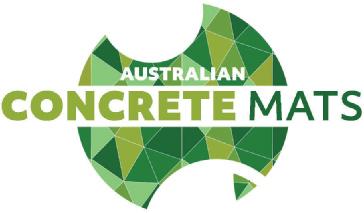
Quick Unroll Permanent Erosion Control
Australian Concrete Mats is a permanent erosion control and protection solution. Concrete blocks embedded in a high-strength polypropylene geogrid form a mat that is easily rolled into place for fast and effi cient installation.
• Quick to install • No special tools required • Cost effective • Eco-friendly • Supports vegetation growth • Easy to maintain • Sustainable and
permanent solution
www.ConcreteMats.com.au


FOR MORE INFO P 0414 280 009 E info@concretemats.com.au

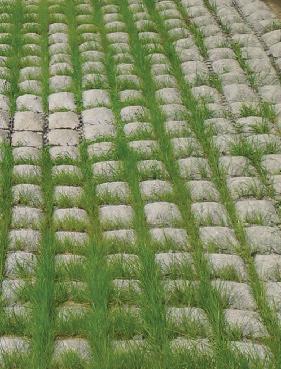

Outdoor Infrastructure Solutions

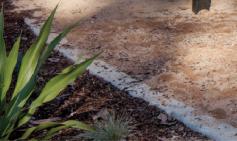



At Stoddart, we understand that designing great urban spaces is about more than seats and tables. It’s about street and park furniture that is DDA compliant, that complements its environment and provides solutions that are effective and attractive. It’s this philosophy that councils, governments and private customers trust Stoddart and Town&Park when in need of aesthetically designed BBQs, high quality shelters, picnic settings, sitting benches, bins, picnic tables and water fountains.






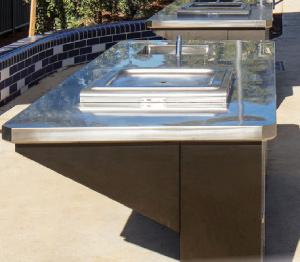

Stoddart has the knowledge and experience to transform any urban space - whether it’s a park, road-side, playground, street scape or a major infrastructure project. Stoddart's breadth of product offering and depth of experience in project management make it the market leader in urban transport focussed infrastructure solutions, and the most reliable choice for clients and patrons alike. Innovation is all about change, and understanding that solutions can only come from the ability to recognise that nothing is impossible.










